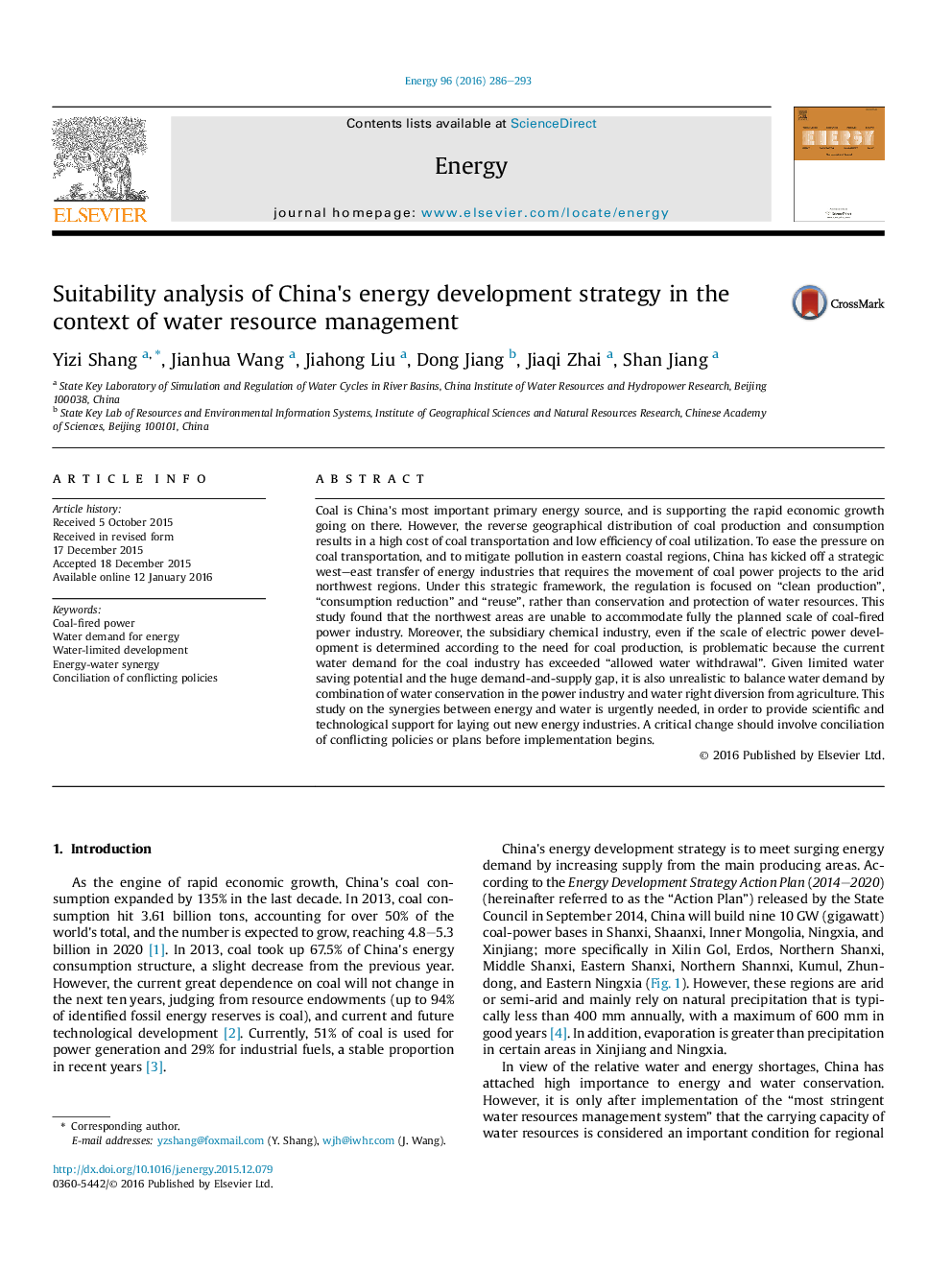| Article ID | Journal | Published Year | Pages | File Type |
|---|---|---|---|---|
| 1731268 | Energy | 2016 | 8 Pages |
•Pollution and coal transport issues compel relocation of power bases northwest.•Planned locations include regions of water scarcity and grain producing areas.•Available water cannot support current dual policies of energy and food production.•Appreciation of synergy between energy and water use is critical for success.•An essential step must involve conciliation of conflicting policies.
Coal is China's most important primary energy source, and is supporting the rapid economic growth going on there. However, the reverse geographical distribution of coal production and consumption results in a high cost of coal transportation and low efficiency of coal utilization. To ease the pressure on coal transportation, and to mitigate pollution in eastern coastal regions, China has kicked off a strategic west–east transfer of energy industries that requires the movement of coal power projects to the arid northwest regions. Under this strategic framework, the regulation is focused on “clean production”, “consumption reduction” and “reuse”, rather than conservation and protection of water resources. This study found that the northwest areas are unable to accommodate fully the planned scale of coal-fired power industry. Moreover, the subsidiary chemical industry, even if the scale of electric power development is determined according to the need for coal production, is problematic because the current water demand for the coal industry has exceeded “allowed water withdrawal”. Given limited water saving potential and the huge demand-and-supply gap, it is also unrealistic to balance water demand by combination of water conservation in the power industry and water right diversion from agriculture. This study on the synergies between energy and water is urgently needed, in order to provide scientific and technological support for laying out new energy industries. A critical change should involve conciliation of conflicting policies or plans before implementation begins.
